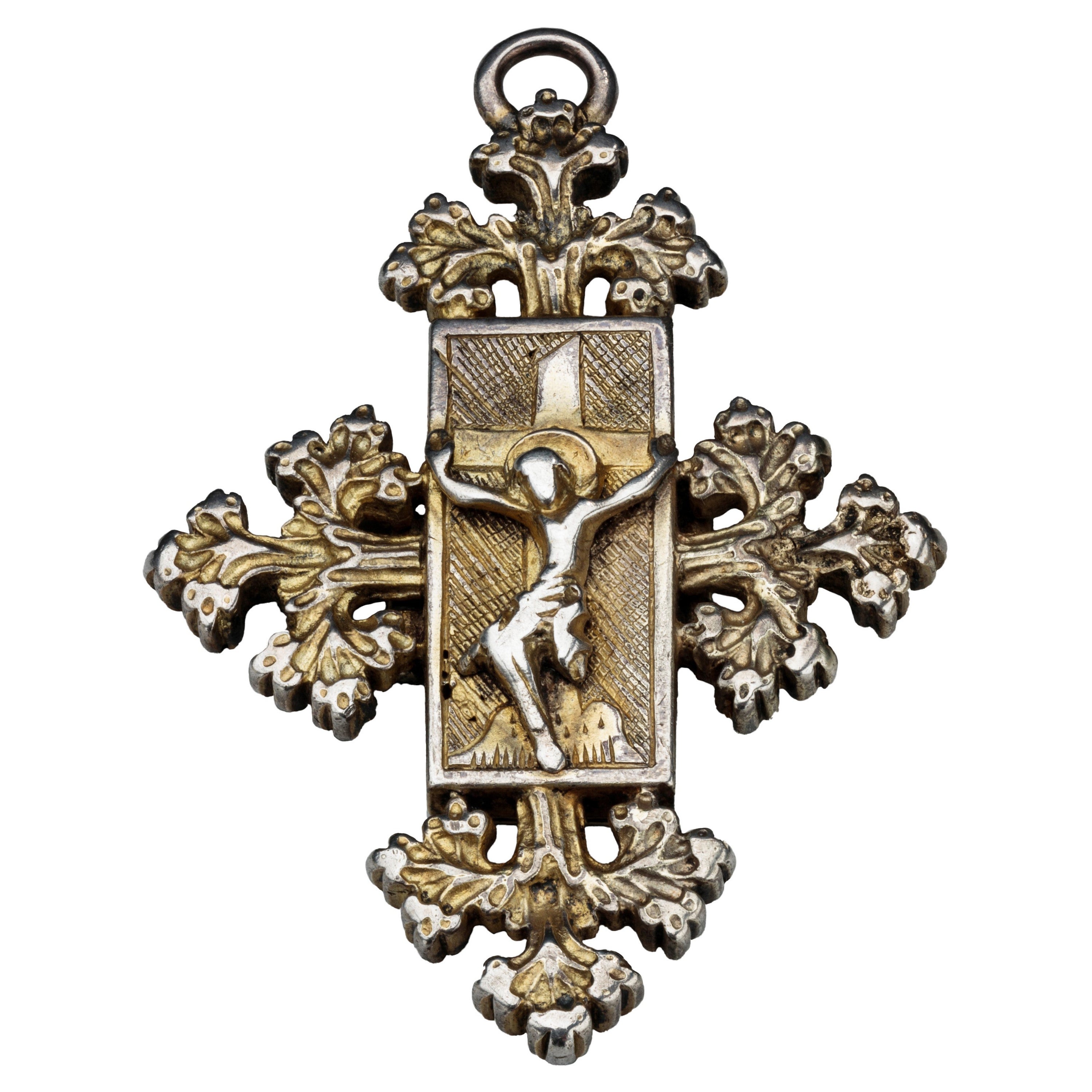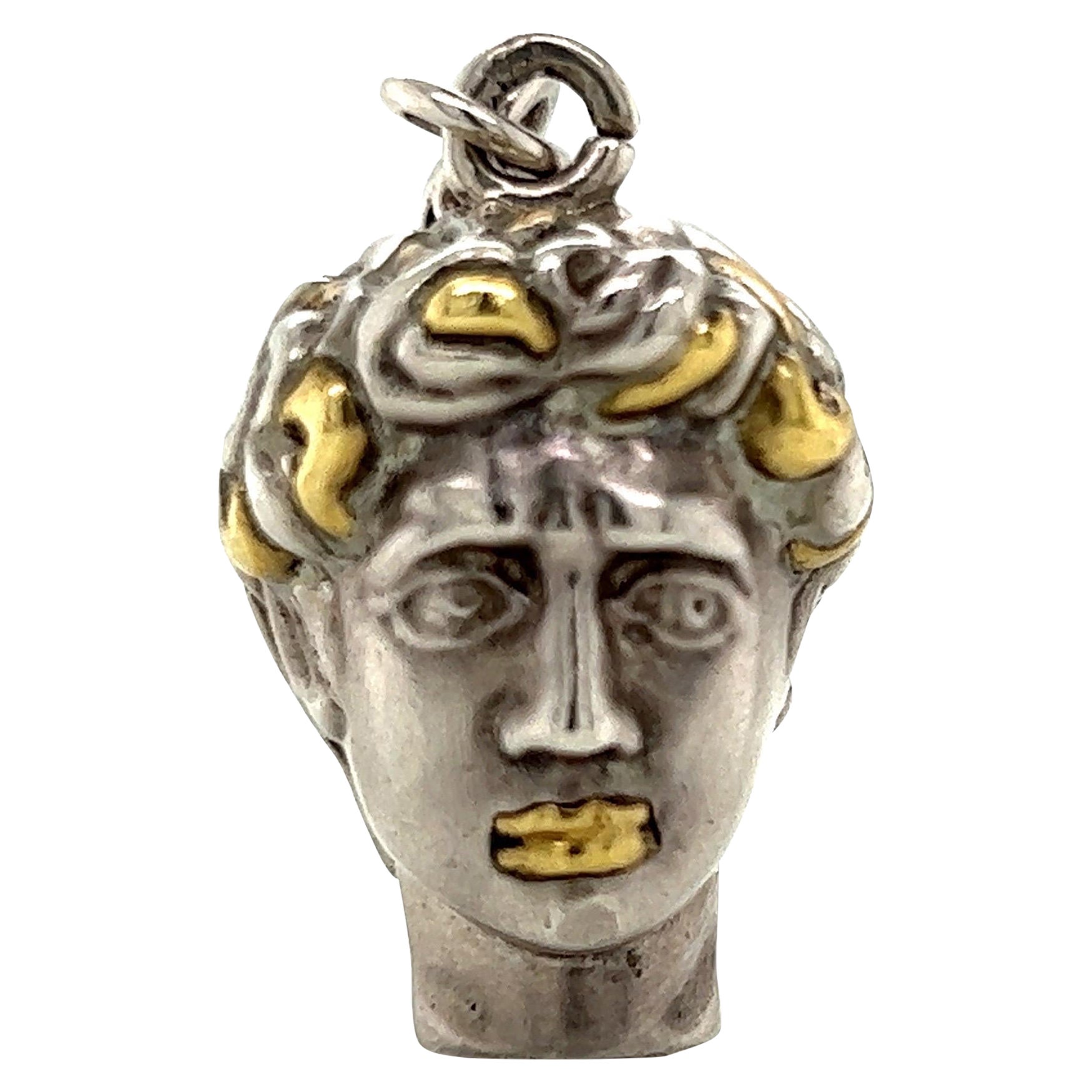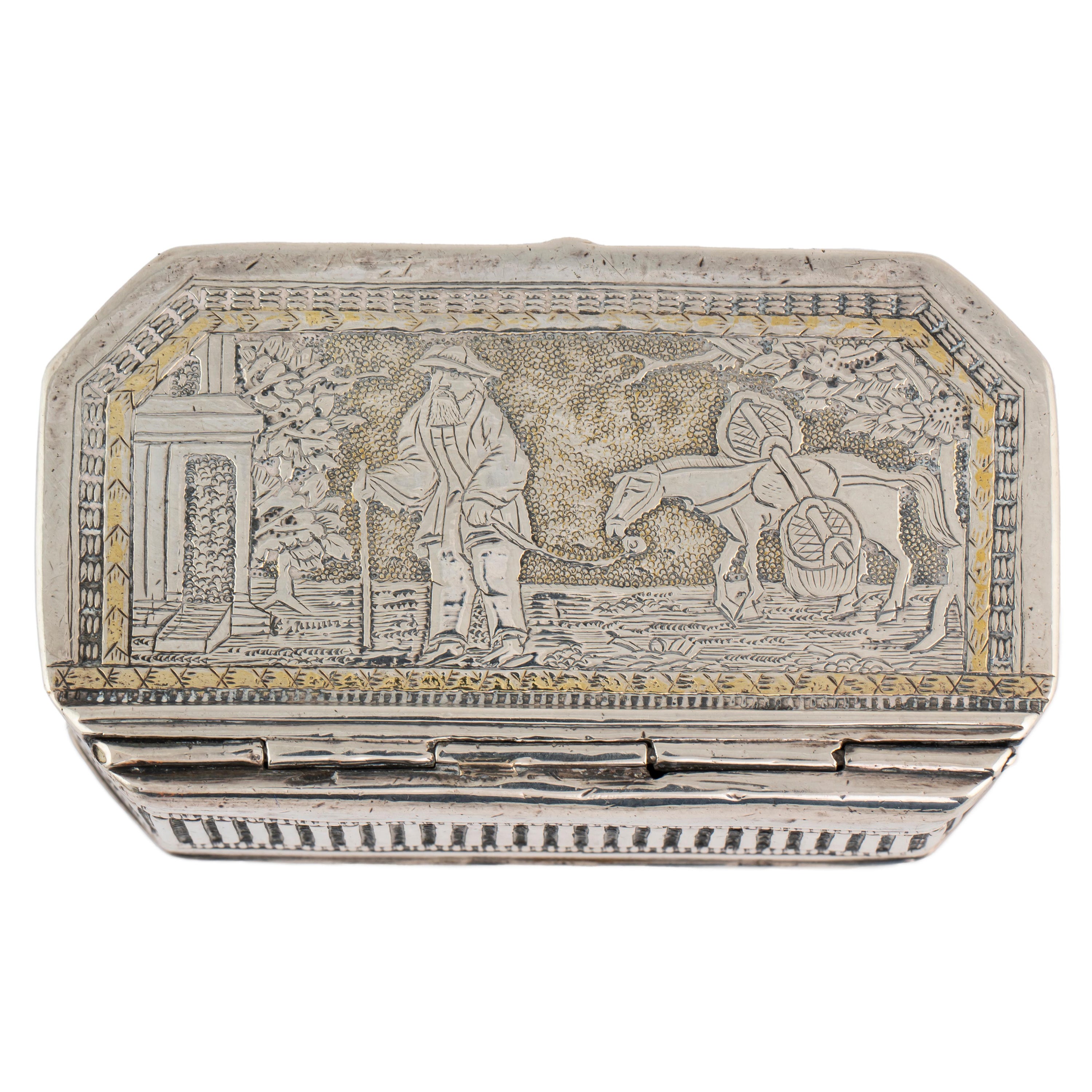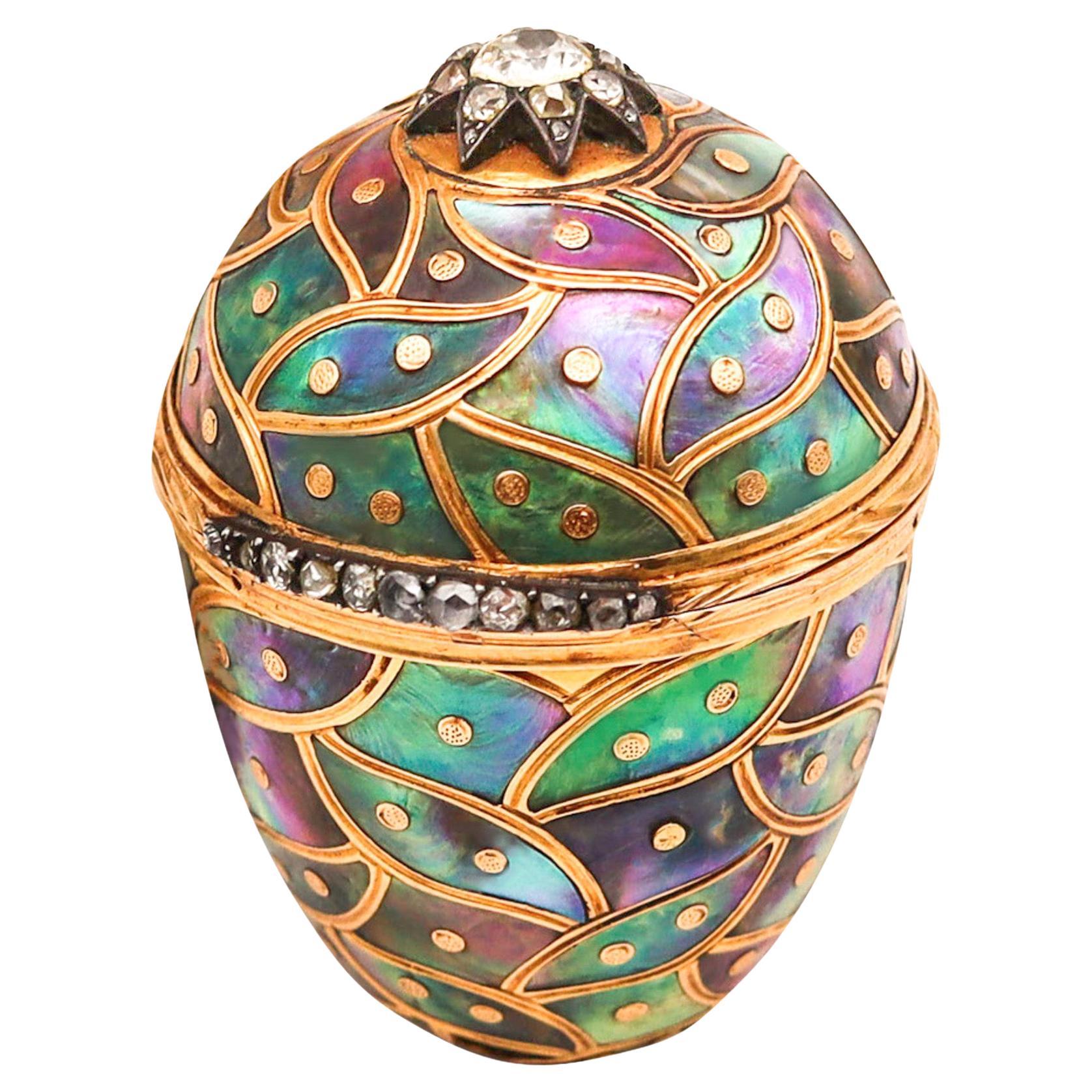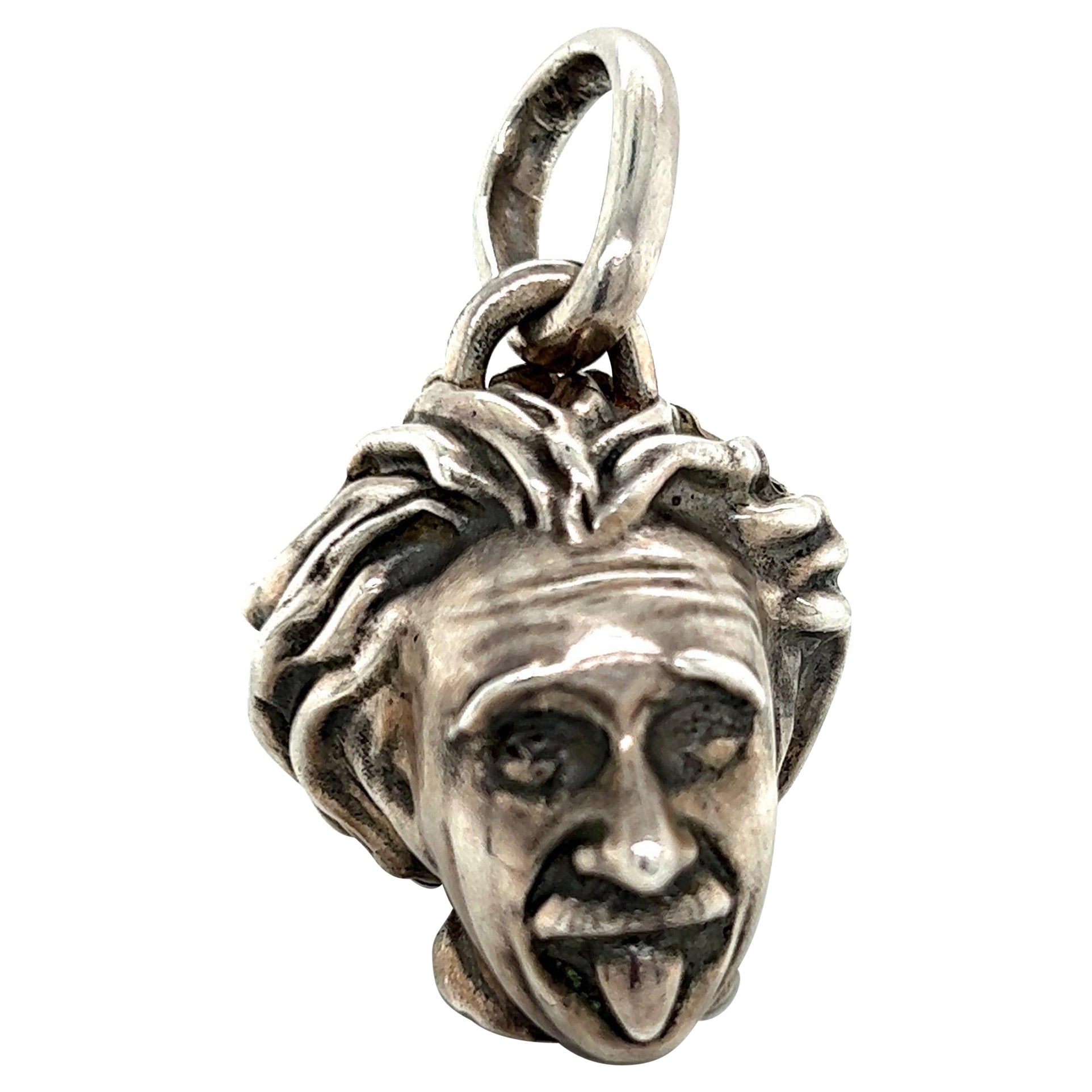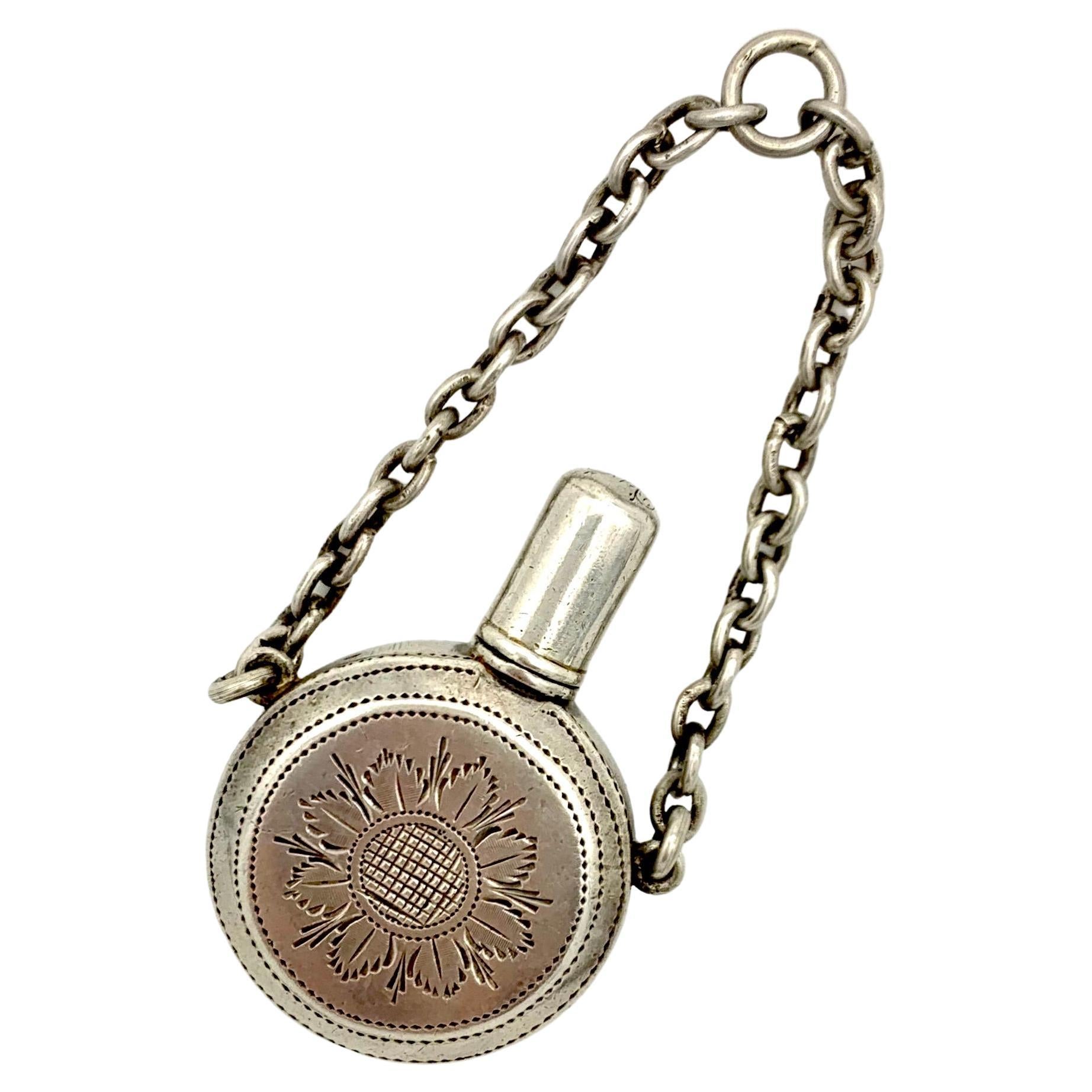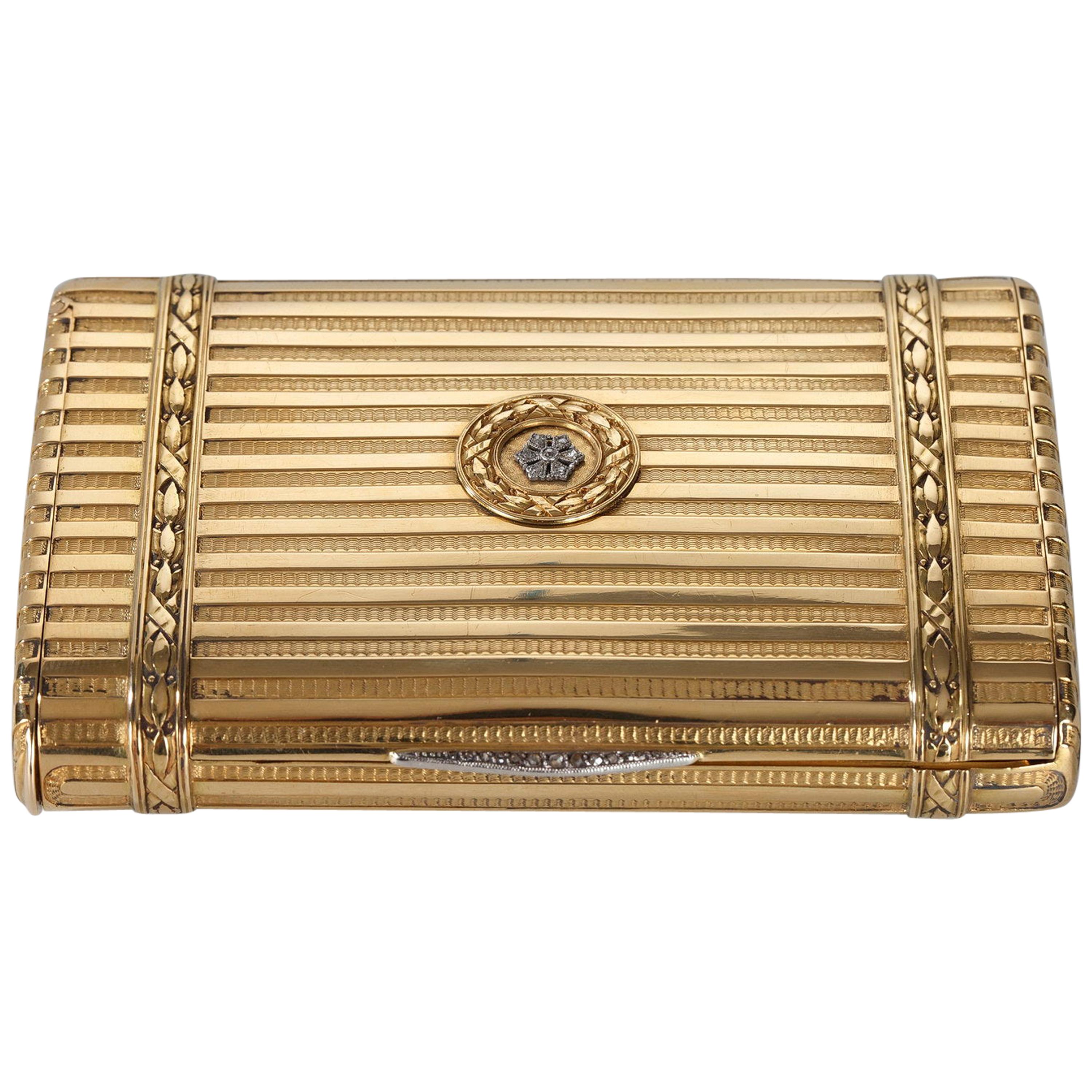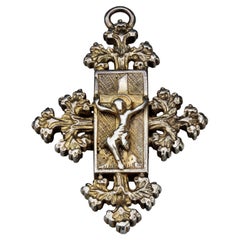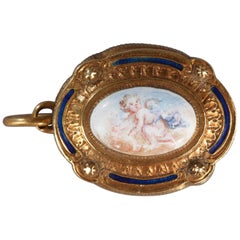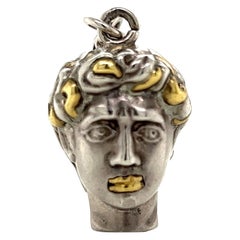
Fifteenth Century Reliquary Pendant with St. Catherine
View Similar Items
Video Loading
Want more images or videos?
Request additional images or videos from the seller
1 of 6
Fifteenth Century Reliquary Pendant with St. Catherine
About the Item
- Metal:
- Weight:49.6 g
- Dimensions:Width: 2.25 in (57 mm)Depth: 0.71 in (18 mm)Length: 2.01 in (51 mm)
- Place of Origin:
- Period:15th Century and Earlier
- Date of Manufacture:c. 1475-1500
- Condition:Wear consistent with age and use.
- Seller Location:Chicago, IL
- Reference Number:Seller: J-350021stDibs: LU2334213072392
About the Seller
5.0
Vetted Seller
These experienced sellers undergo a comprehensive evaluation by our team of in-house experts.
Established in 1991
1stDibs seller since 2021
5 sales on 1stDibs
Typical response time: 16 hours
More From This SellerView All
- Fifteenth Century Reliquary Pendant with Christ on the CrossLocated in Chicago, ILReliquary Pendant with Christ on the Cross Germany, c. 1480–1500 Gilded silver Weight 35 grams; dimensions 69 × 46 × 8 mm A mixture of forms gives t...Category
Antique 15th Century and Earlier German Figurines and Sculptures
MaterialsSilver, Gilt Metal
- Antique Reliquary Book Pendant LocketLocated in Chicago, ILRELIQUARY PENDANT IN BOOK FORM Probably southern Germany, 1630–40 Gilded silver, verre églomisé Weight 13.2 grams; dimensions 42 × 25 × 12 mm; opens to 40 mm Gilded silver pendant in book form with hinged, lid, corded wire surround, and engraved spine. The front cover of the book is set with a plaque depicting Moses receiving the Law in verre églomisé, and the back cover shows the Sacrifice of Abraham. The scenes are in gold against a red background. When opened, the book reveals two portraits, probably of a husband and wife, wearing seventeenth-century dress. The costumes suggest a date c. 1630-40; the wife holds a daisy. Trefoil-shaped pendant loop on top and bottom, and book clasp. As in the scenario described for the assemblage of these pendant miniature books (see no. 34), this book may have satisfied the desires of a particular patron, perhaps even one of the Jewish faith. The images that have been chosen for the four verre églomisé inserts are somewhat unusual within the group of comparable objects; on the front is Moses, on the back is the Sacrifice of Isaac. On the inside, instead of an iconic or doctrinal image, one sees portraits of the patron and his wife, in their finest dress, contents reminiscent of a modern locket...Category
Antique Mid-17th Century Pendant Necklaces
MaterialsGilt Metal
- Renaissance Reliquary Pendant with Pearl and EnamelingLocated in Chicago, ILRELIQUARY PENDANT WITH PEARL Spain or Spanish Netherlands, c. 1620 Gold, rock crystal, enamel, pearl, bone relics Weight 12.9 grams; dimensions 40 ...Category
Antique 1620s Spanish Renaissance Pendant Necklaces
MaterialsPearl, Gold, Enamel
- Late Renaissance Octagonal Gilded Brass Reliquary Pendant with Velvet InteriorLocated in Chicago, ILOCTAGONAL RELIQUARY PENDANT Probably Italy, c. 1600 Fire-gilded brass, glass, velvet, ink on paper Weight 63.2 grams; dimensions 82 × 47 × 21 mm (with loop) Physical description: Double-sided pendant in octagonal form made of fire-gilded brass. Both sides of the pendant with deep profiled frames with glass. The slightly indented side panels comprise openwork friezes with symmetrical scrollwork. On the front is dark red velvet, onto which tiny bone relics of saints (now missing) would have been attached. Labels on a lace-like paper silhouette remain, with names written in ink, mostly faded; only “S. Agnes” is legible. The back is hinged and when opened reveals a velvet-lined interior and paper insert with floral decorations on a turquoise ground, on which fragments of bones are attached. Baluster shaped base for shield-like pendant loop and ring. This reliquary pendant is difficult to situate historically because it is a composite object. It represents traditional handwork in the form of a paper cutout, combined with a jeweler’s beautiful fire-gilt brass case. The work of paper cutting, painting, and ornamentation, sometime combined with needlework, is comparable to work still being done in the nineteenth century by nuns and pious ladies. It is prayerful work, a devotional exercise in itself, and shows reverence to the tiny relic fragments that it would have framed and honored. Early versions of this sort of handiwork might be found in the meticulous displays sometimes called “Paradise Gardens.” These were made, beginning in the sixteenth century, by the nuns at Mechelen, in northern Belgium, in multimedia handwork displays of sewing and gluing, combining relics with paper, cloth, glass, metal wire, and found materials. These textured and pious displays were then combined with paintings and cases by professional artists and artisans, as in the example in Cassel. Unfortunately, because of water damage, only one of the labels of the original relic displayed in this reliquary is legible, inscribed “S. Agnes” at the center top; the other names are faded. Presumably the deep velvet-lined box would have also held an assortment of relics other than the ones that were visible through the glass, and perhaps there would have been another display in the glass on the other side of the pendant. There is a second paper insert, this one decorated with a turquoise ground and silhouette flowers to which bone fragments seem to be still attached. The octagonal case, in contrast to the paper cutout, is not at all “home-made.” It has an openwork frieze in scrollwork patterns familiar from enamel work and other metalwork done for European courts and nobility. It is not unlike cases for expensive watches...Category
Antique Early 1600s Italian Pendant Necklaces
MaterialsBrass
- Antique Spanish Jet Amulet Pendant with FigaLocated in Chicago, ILAMULET PENDANT WITH FIGA Spain, c. 1620–1630 Jet, silver, and enamel Weight 60.7 grams; dimensions 85 × 49 × 18 mm Large pendant in the shape of a hand carved from jet with a clinched fist in the figa (Spanish higa) gesture. In the palm of the hand is a heart carved in relief and on the back a six-ray star in a circle. The silver mount covers the wrist like a cuff and is decorated with a frilled border, and on the front with collet-set bosses with silver C-scrolls against blue enamel; on the back is a roundel in relief with floral motif. Domed base for the pendant loop in pea-pod form. The figa (also fica or higa) represents an age-old symbol of protection against the evil eye and other demonic threats. Its origins were pagan and buried deep in antiquity. Roman examples, such as one found recently in an archeological excavation in London, also make it clear that the protective qualities are based in a sexual symbolism–particularly the power of the phallus. The Roman bone figa/phallus in effect represents the phallus twice; that is, the gesture made by the figa hand is generally explained as fingers representing the female genitalia (vulva) penetrated by the phallus of the thumb. But other interpretations are less specific, including explanations that the left hand is the feminine principle, and the right hand is the masculine. In Spain, jet figa are common; we see one in the portrait of Anne of Austria the infanta (p. 75). That is not to say that the objects are not sumptuous or treasured. Jet was a very valuable material, and in many examples like this one, the figa is embellished with beautiful enameling or is even gem-studded. Comparable objects occur in equally sumptuous materials such as rock crystal. The enameled setting allows a dating of these objects that otherwise might prove difficult, given that the production of such objects in Spain is so consistent over centuries. Indeed, there is another, even more elaborately carved example in this collection, attached to the “magic belt” (no. 9). That example may belong to an earlier group. That figa includes deeply excavated carving, including on the upper surface, an M-shaped design that Walter Leo Hildburgh links to the heart shape (as it occurs more explicitly on this example). Hildburgh argues that its presence is especially common on these objects and that it originally represented the Sacred Heart of Mary...Category
Antique Early 17th Century Spanish Pendant Necklaces
MaterialsSilver
- Antique Silver Spanish Cross Pendant with Rock CrystalsLocated in Chicago, ILCross Pendant with Rock Crystals Spain or Portugal, late 17th - early 18th century Silver, gold, rock crystal Weight 9.1 gr.; Dimensions 56.3 × 38.8 mm. An elaborate and elegant cross pendant made of silver with rock crystals in closed settings. The center consists of a larger round gemstone surrounded by five irregular-shaped stones forming the cross. The openwork arms have a triangular shape and are formed of facetted rock-crystals in foliate settings. The obverse side of the cross consists of a layer of gold. An extension with two stones and an angular shaped frame is hooked into the pendant loop, probably to be worn on a velvet band. The pendant is in good, wearable condition. After the Reformation, cross pendants were worn mainly in Catholic countries by men, women, and children. During the seventeenth century, the designs became ever more intricate, and the crosses were often embellished with gemstones, such as rock crystals in this example. These were sourced along the Alpine regions of France, Switzerland, Austria, and Southern Germany. The stones gave the appearance of diamonds. The foliate settings are characteristic of late seventeenth- and eighteenth-century jewelry made in Spain...Category
Antique Late 17th Century Pendant Necklaces
MaterialsCrystal, Rock Crystal, Gold, Gold Plate, Silver
You May Also Like
- 19th Century Gold and Enamel Box PendantLocated in Paris, FRSmall little box of oval shape mounted as a pendant. The hinged lid and the side are adorned with enamelled medallions representing putti or floral arrangements. The medallions are f...Category
Antique 1850s French Pendant Necklaces
MaterialsGold, Enamel
- Sterling Silver "David the Lover Boy" Key Ring/Pill Box/Pendant with BrassLocated in New York, NYSterling Silver with Brass Accents "David the Lover Boy" Key Ring/Pill Box/Hidden Compartment that Opens and Closes with Magnetic System. Could Be Changed Into a Pendant. The head m...Category
21st Century and Contemporary American Boxes and Cases
MaterialsSterling Silver, Brass
$960 Sale Price20% OffFree Shipping - Antique Charm Pendant Basket Gilt Metal EnamelLocated in Munich, BavariaThis delightful little pendant in the shape of a basket is made out of guilt metal and decorated with pale blue and white enamel.Category
Antique 1820s George IV Boxes and Cases
MaterialsEnamel, Gilt Metal
- Silver Trinket Box with Chinese Scene, Late 19th-Early 20th CenturyLocated in St. Catharines, ONA heavy silver box with canted corners, the hinged cover in the style of an ancient traditional woodcut featuring a Chinese traveling figure or salesman w...Category
Early 20th Century Anglo-Indian Boxes and Cases
MaterialsSilver
- 84 Silver Russia Enamel Pencil Case PendantLocated in Orimattila, FI84 Silver Russia Enamel Pencil Case Pendant. Another sign unclear perhaps r.ii or r.u.Category
Antique 19th Century Russian Russian Empire Boxes and Cases
MaterialsSilver, Enamel
- Austrian 18th Century Egg Shaped Box In 18Kt Gold With Diamonds & Abalone ShellLocated in Miami, FLJeweled egg shaped box. An exceptional and magnificent piece, made in the style of Louis XV in Europe. Most probably created in Vienna Austria, back in the middle of the 18th century, circa 1760. This box was carefully crafted in the shape of an egg, in solid yellow gold of 18 karats with small accents in .800/.999 silver for the settings of the rose cut diamonds. It is fitted with a discrete single barrel hinge and a push thumb. Embellished with earth mined natural diamonds and carved abalone shells...Category
Antique 18th Century Austrian Neoclassical Boxes and Cases
MaterialsDiamond, White Diamond, Yellow Gold, Silver, Gold, 18k Gold
Recently Viewed
View AllMore Ways To Browse
Twisted Skirt
Twist Skirt
Inset Gold Ring
Silver With Gold Skirts
Antique Rings Women
Womens Antique Rings Rings
Women Antique Rings
Antique Women Rings
Antique Mothers Ring
Antique Silver Cat
Double C Ring
Saint Medallion
Antique Three Wheeler
Antique Silver Pearl Ring
Antique Ring Womens Jewellery
Antique Christian Jewelry
Victoria Pearl
Enamel Rings 9
